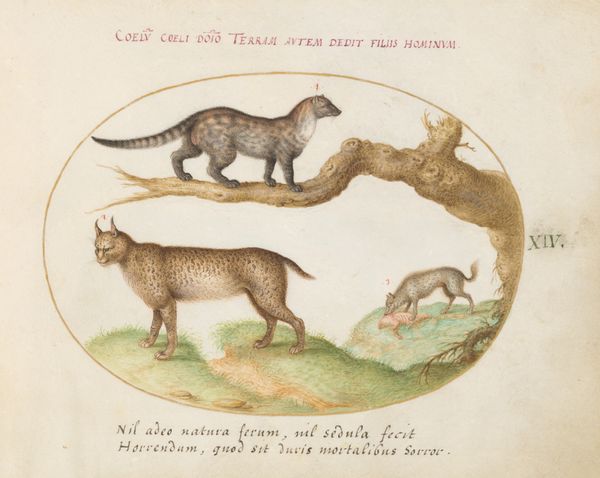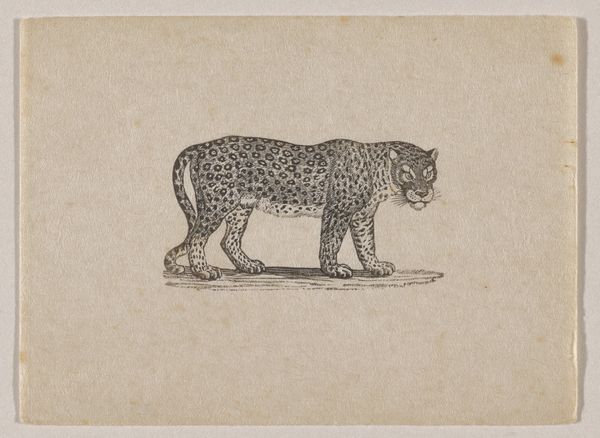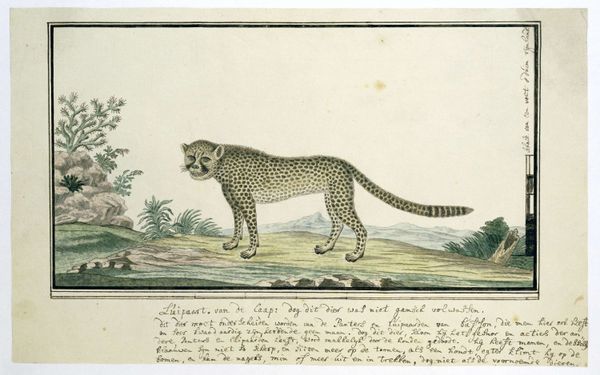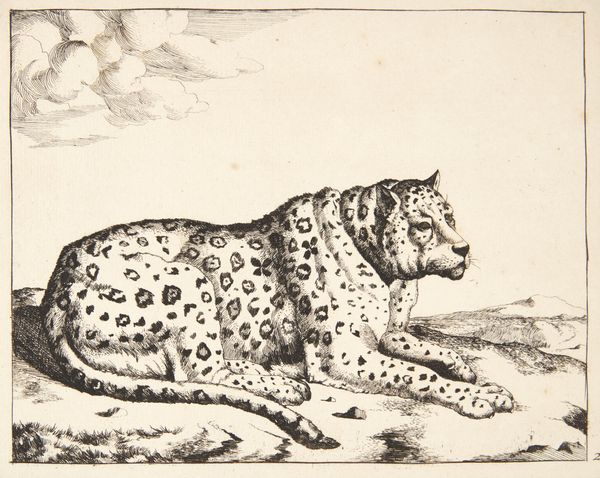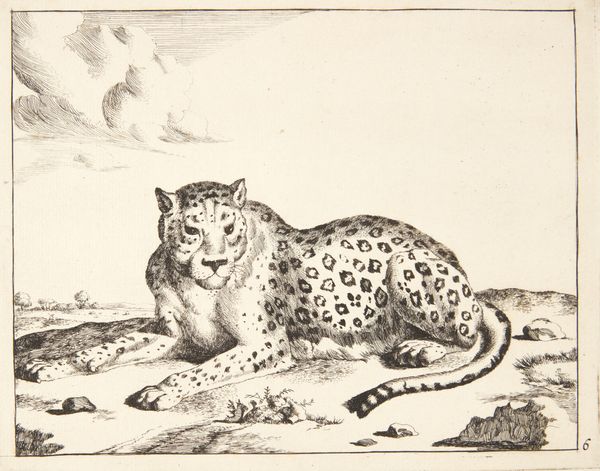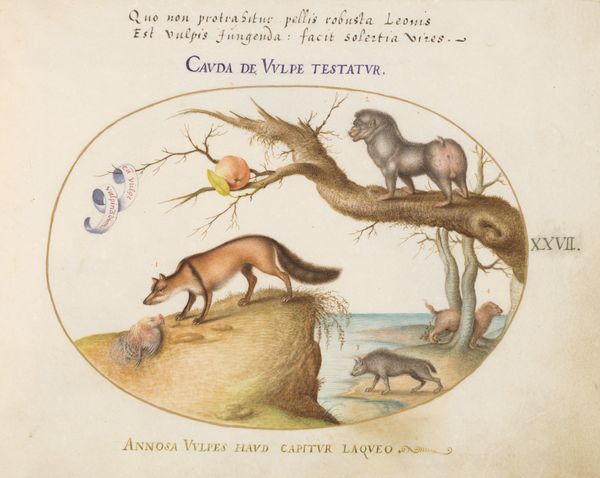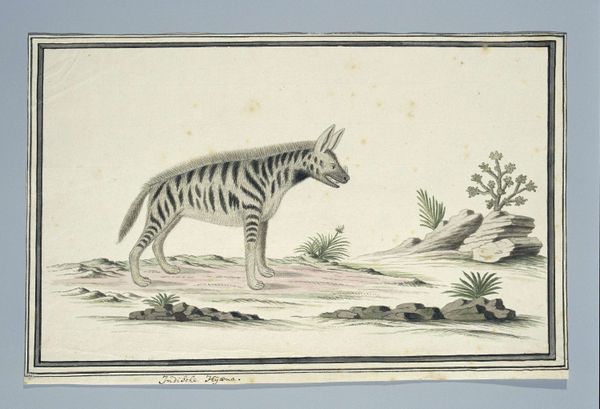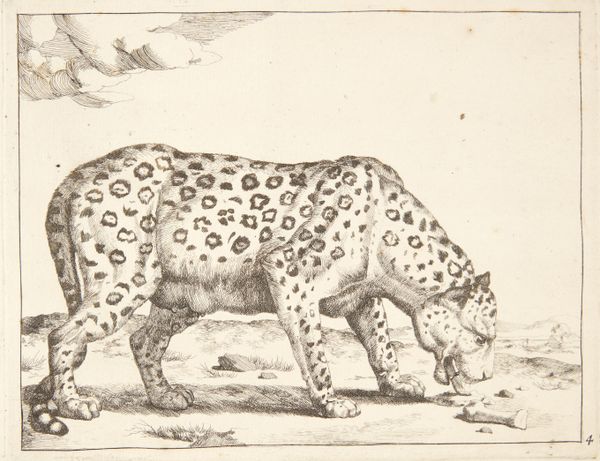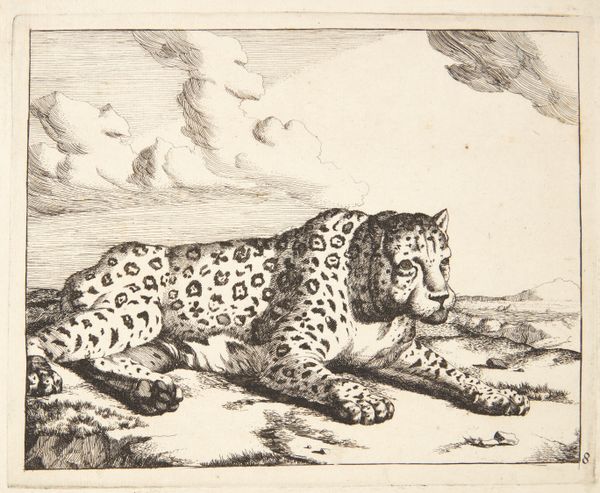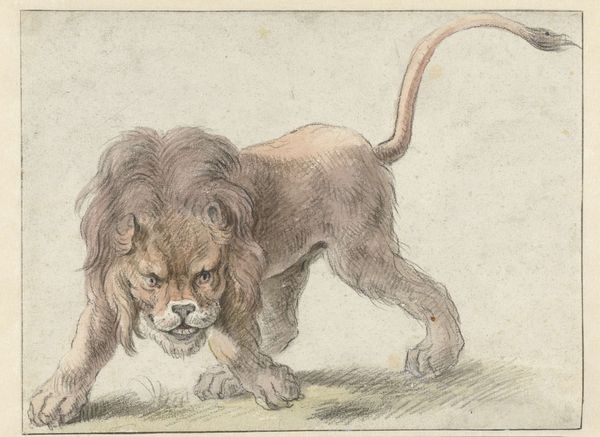
drawing, watercolor
#
drawing
#
animal
#
landscape
#
mannerism
#
figuration
#
11_renaissance
#
watercolor
#
coloured pencil
#
realism
Dimensions: page size (approximate): 14.3 x 18.4 cm (5 5/8 x 7 1/4 in.)
Copyright: National Gallery of Art: CC0 1.0
Editor: This is Joris Hoefnagel’s “Plate 12: A Cheetah(?) and a Wild Sheep,” made around 1575 to 1580. It’s a watercolor drawing of a cheetah standing over what looks like a crouching sheep. It feels so…clinical almost, like a scientific illustration, despite being quite beautiful. What do you make of it? Curator: It’s interesting you say “clinical.” These detailed depictions of flora and fauna became popular during the Renaissance, fueled by exploration and the desire to document the natural world. But this isn't just about scientific accuracy. Consider the Latin inscriptions. “Semper Aliquid Novi Adfert Africa” – “Africa always brings something new.” And "Pardi Mors" or “Death of the Leopard”. What do they suggest to you? Editor: That Hoefnagel maybe intended more than just documentation? Like a commentary on Africa, perhaps? Curator: Exactly! Think about the context. Europe's relationship with Africa was complex – a mixture of fascination, exploitation, and a desire to categorize and control. The image presents these exotic animals almost as specimens, fitting into a European worldview. It raises questions about the power dynamics inherent in observing and naming. Editor: So the 'newness' is framed by this lens of European observation and almost ownership? It also makes me wonder, why place predator and prey within the same pictorial space? Curator: That's an important point! The juxtaposition highlights a vision of the "natural world" that emphasizes dominance and survival, reinforcing particular perspectives through visual arrangement. How do you think those views might have shaped broader cultural attitudes toward the African continent at the time? Editor: Wow, I hadn’t considered that. It’s not just a picture of animals, it’s about how Europe saw Africa and the power dynamics inherent in that gaze. Curator: Precisely! Looking at art through its historical and cultural lens allows us to unpack these complex relationships and understand how imagery contributes to shaping societal perceptions.
Comments
No comments
Be the first to comment and join the conversation on the ultimate creative platform.

